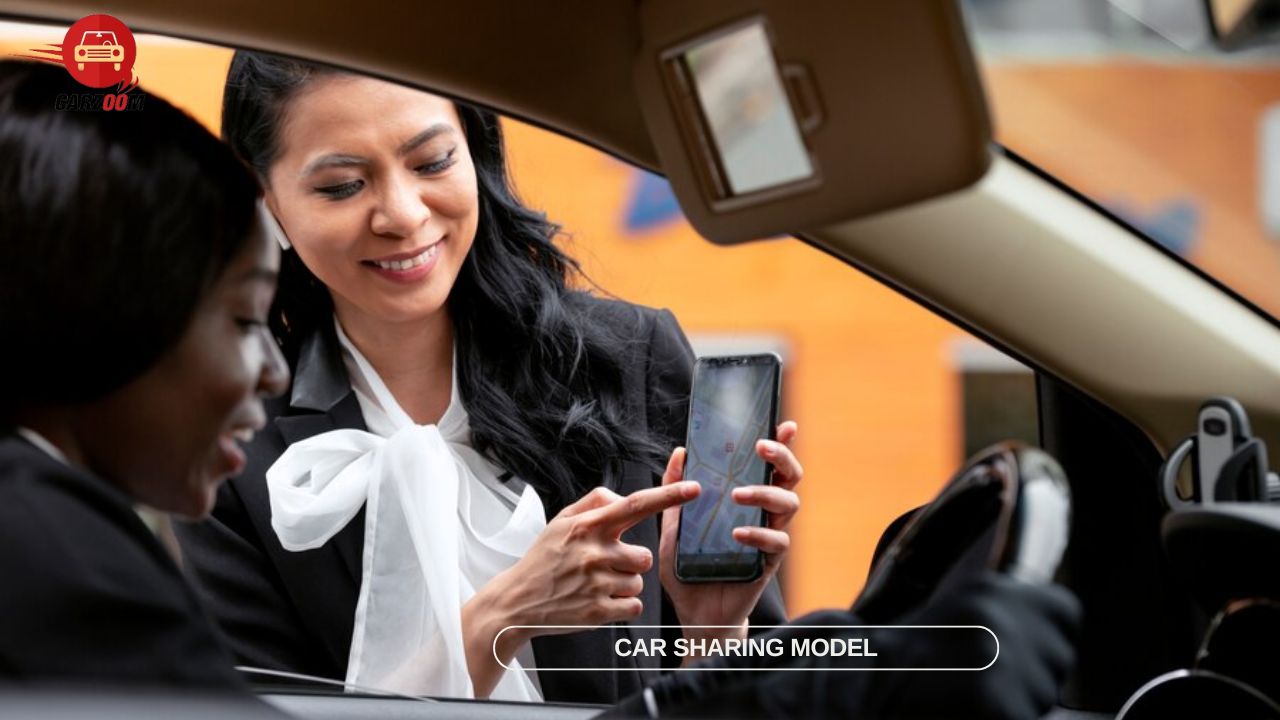Car Sharing: Everything You Should Know Before Your Ride
Are you tired of dealing with traffic jams, struggling to find parking spots, and worrying about the environment when you drive? If so, you’re not alone. Many people in cities are looking for easy and eco-friendly ways to get around without owning a car.
That’s where car sharing comes in. It’s a new way of using cars where you share them with others instead of owning one yourself. Car sharing offers different types of services, like picking up a car from one place and dropping it off somewhere else, or finding a car wherever you need it in the city. It’s cheaper than owning a car, and it helps reduce traffic and pollution.
Let’s take a closer look at how car sharing works, its benefits, and what the future might hold for this exciting way of getting around town.
What is the Car Sharing model?
Car sharing is a transportation model where individuals can rent vehicles for short periods, often by the hour or minute, typically for short-distance trips within urban areas. It operates on a membership or pay-as-you-go basis, allowing users to access vehicles conveniently located throughout a city via a mobile app or website.
The model typically involves a fleet of vehicles owned by a car-sharing service provider, which can include cars, vans, or even electric scooters and bicycles. Users can locate and unlock available vehicles using their smartphones, use the vehicle for their intended trip, and then return it to a designated parking spot within the service area.
Car sharing offers several advantages, including flexibility, cost savings compared to car ownership, and environmental benefits by reducing the number of cars on the road. It can also alleviate parking congestion in urban areas and provide access to transportation for individuals who may not own a car or need one infrequently. However, there are also challenges associated with car sharing, such as availability constraints during peak hours, potential for vehicle damage or cleanliness issues, and limitations on long-distance travel.
Types and Business Models
The car-sharing industry encompasses various types and business models tailored to meet different needs and preferences of users. One of the primary distinctions lies between peer-to-peer (P2P) and traditional car-sharing services.
Peer-to-peer (P2P) car-sharing platforms allow individuals to rent out their vehicles to others when they’re not in use. These platforms typically operate through an online marketplace where vehicle owners list their cars for rent, and renters can search and book vehicles based on their location and availability. P2P car sharing promotes community-driven utilization of resources and often offers a wider variety of vehicle options compared to traditional services.
Traditional car-sharing services, on the other hand, maintain their own fleet of vehicles that are available for rent to registered users. These services typically require users to become members and pay a subscription fee or usage fee to access the vehicles. Traditional car-sharing companies manage the maintenance, insurance, and logistics of their fleets, providing convenience and reliability to users.
Within these overarching models, there are several subtypes and variations, including:
- Round-trip Car Sharing: Users pick up a vehicle from a designated location and return it to the same spot after their trip.
- One-way Car Sharing: Users can pick up a vehicle from one location and drop it off at another, providing greater flexibility for point-to-point travel.
- Free-floating Car Sharing: Vehicles are distributed throughout a service area and can be picked up and dropped off at any designated parking spot within the designated zone.
- Station-based Car Sharing: Vehicles are parked at specific locations or stations, and users must pick up and return the vehicle to the same station.
Additionally, car-sharing services may target specific niches or demographics, such as corporate car sharing for businesses, campus car sharing for universities, or luxury car sharing for premium vehicle options.
Advantages and Disadvantages
| Advantages | Disadvantages |
| Cost Savings | Limited Availability |
| Environmental Benefits | Dependency on Vehicle Availability |
| Reduced Parking Hassles | Potential for Vehicle Cleanliness and Maintenance Issues |
| Flexibility and Convenience | Inconvenience for Long-Distance Travel |
| Reduced Congestion and Traffic | Potential for Overbooking or Unavailability of Vehicles |
| Access to Different Vehicle Options | Additional Fees and Charges |
| Shared Resource Utilization | Potential for Higher Costs During Peak Hours |
| Mobility Solutions for Non-Car Owners | Lack of Personalization |
| Community Building and Social Interaction | Dependence on Smartphone Apps for Access and Payment |
What Problems Might Be Solved by Car Sharing
Here are some problems that car sharing can help solve, presented in bullet points:
- Traffic Congestion: By reducing the number of privately-owned vehicles on the road, car sharing can alleviate traffic congestion, particularly in urban areas.
- Parking Challenges: Car sharing minimizes the need for dedicated parking spaces for individual vehicles, thereby reducing parking demand and congestion.
- Environmental Pollution: Shared vehicle usage leads to fewer vehicles on the road, resulting in lower emissions of greenhouse gases and pollutants, contributing to cleaner air and a healthier environment.
- Cost of Vehicle Ownership: Car sharing offers a cost-effective alternative to owning a car, eliminating expenses such as maintenance, insurance, and depreciation, particularly for individuals who use vehicles infrequently.
- Urban Space Utilization: By promoting shared usage of vehicles, car sharing optimizes the utilization of urban space, reducing the need for expansive parking lots and garages.
- Access to Transportation: Car sharing provides convenient access to transportation for individuals who do not own a car or have limited access to public transportation, improving mobility and accessibility.
- Reduced Reliance on Private Cars: Car sharing encourages a shift away from private car ownership towards shared mobility solutions, supporting sustainable transportation practices and reducing reliance on single-occupancy vehicles.
- Social and Community Benefits: Car sharing fosters social interaction and community cohesion by encouraging resource-sharing among users and promoting a sense of collective responsibility towards transportation needs.
- Last-mile connectivity: Car sharing can complement existing public transportation systems by providing a flexible and convenient solution for “last-mile” connectivity, bridging the gap between transit stations and final destinations.
- Traffic Safety: With fewer vehicles on the road, car sharing can potentially contribute to improved traffic safety by reducing the risk of accidents and collisions, particularly in densely populated urban areas.
These points highlight the multifaceted benefits of car sharing in addressing various transportation-related challenges and promoting sustainable urban mobility.
Tips & Recommendations
Here are some tips and recommendations for individuals considering or using car-sharing services, presented in bullet points:
- Plan Ahead: Schedule your trips in advance whenever possible to ensure vehicle availability, especially during peak hours or busy times.
- Compare Prices: Explore different car-sharing providers and compare their pricing structures, membership fees, and usage rates to find the most cost-effective option for your needs.
- Read Reviews: Check online reviews and testimonials from other users to gauge the reliability, cleanliness, and overall quality of service offered by car-sharing providers.
- Understand Terms and Conditions: Familiarize yourself with the terms and conditions of the car-sharing service, including insurance coverage, liability, and usage policies, to avoid any misunderstandings or surprises.
- Respect Vehicles: Treat shared vehicles with care and respect, adhering to cleanliness guidelines and returning the vehicle in the same condition as when you received it.
- Use Efficiently: Opt for the appropriate vehicle size and type for your trip to minimize costs and environmental impact, and be mindful of fuel efficiency and driving habits.
- Report Issues Promptly: If you encounter any issues or problems with a shared vehicle, such as damage or mechanical issues, report them to the car-sharing provider immediately to ensure timely resolution.
- Safety First: Prioritize safety by observing traffic laws, wearing seat belts, and practicing defensive driving techniques while using shared vehicles.
- Consider Alternatives: Evaluate alternative transportation options, such as public transit, biking, or walking, for shorter trips or when car sharing is not the most practical or cost-effective choice.
- Provide Feedback: Share your experiences and feedback with the car-sharing provider to help improve service quality and address any concerns or suggestions for enhancement.
These tips and recommendations aim to enhance the overall car-sharing experience, ensuring convenience, affordability, and satisfaction for users while promoting responsible and sustainable transportation practices.
Conclusion
Car sharing presents a promising solution to various transportation challenges faced in urban environments. By offering flexible, cost-effective access to vehicles on a shared basis, car sharing addresses issues such as traffic congestion, parking shortages, and environmental pollution.
Through diverse models such as round-trip, one-way, and free-floating services, car sharing caters to the diverse needs and preferences of users, promoting convenience, affordability, and sustainability. However, while car sharing offers numerous benefits, it’s essential for users to be mindful of factors such as vehicle availability, pricing structures, and terms of service to maximize the experience.
How much did you like Our detailed 7 Essential Tips for Car Detailing and Cleaning? Review Also, please share these Blogs with your friends on social media.
Recommended




























